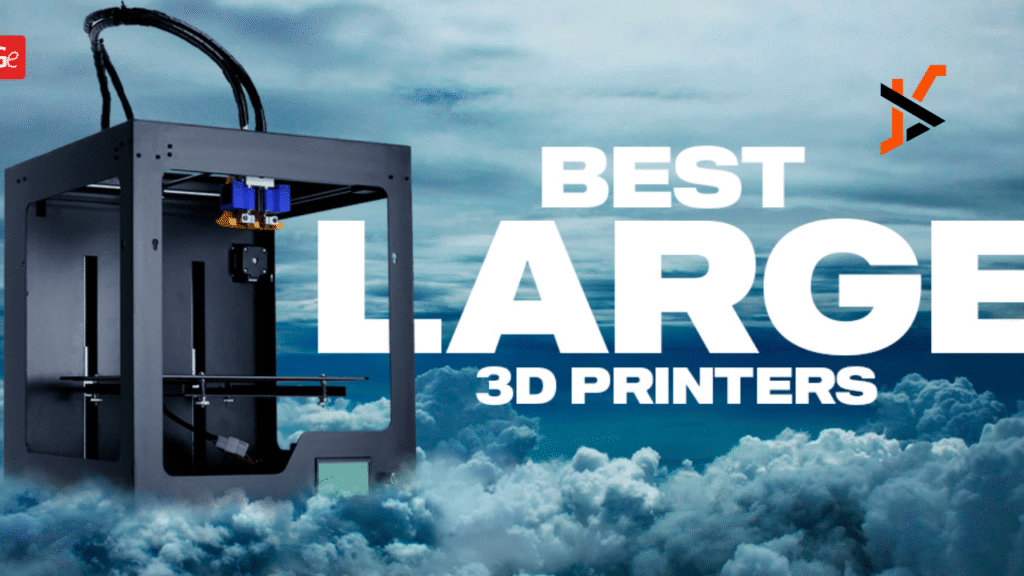Ever wondered if you can 3D print big objects? The answer is a resounding yes. From full-sized furniture and intricate art installations to automotive prototypes and even houses, the world of large-scale 3D printing is rapidly expanding, making it possible to bring massive ideas to life with unprecedented speed and design freedom.
This guide will walk you through the exciting possibilities of large-format 3D printing, exploring the technologies, materials, and real-world applications that are pushing the boundaries of manufacturing and design.
How Does Large-Format 3D Printing Work?
At its core, large-format 3D printing operates on the same principle as its desktop counterparts: additive manufacturing. The process involves building an object layer by layer from a digital file. However, the scale, machinery, and materials are significantly different.
- Industrial Polymer Printers: These are scaled-up versions of common 3D printing technologies, designed for industrial use with high-performance polymers.
- Pellet-Extrusion Systems: Instead of filament, these systems use plastic pellets, which are significantly cheaper and can be deposited at a much faster rate, making them ideal for very large objects.
- Large-Format FDM/FFF Printers: A large FDM 3D printer functions similarly to a desktop Fused Deposition Modeling (FDM) or Fused Filament Fabrication (FFF) printer but on a much grander scale, allowing for the creation of substantial single-piece prints.
- Concrete 3D Printers (3DCP): These specialized printers extrude a concrete mixture to construct buildings and infrastructure layer by layer.
The primary distinction from desktop printing lies in the sheer volume and speed. While a desktop printer might take hours to produce a small figurine, a large-format system can fabricate a piece of furniture in a similar timeframe.
What Materials Can Be Used for Large 3D Prints?
The material options for large-scale 3D printing are diverse and continually evolving to meet the demands of various industries.
- Polymers: Common thermoplastics like PLA and ABS are available in large-format-friendly forms. High-strength composites, often reinforced with carbon fiber or glass fiber, are also popular for producing strong, lightweight parts.
- Recycled Plastics and Bio-composites: Sustainability is a growing focus. Many large-format systems can use recycled plastic pellets and bio-composites, reducing waste and environmental impact.
- Concrete and Cementitious Mixes: These are the go-to materials for construction-scale 3D printing, enabling the rapid creation of building walls and other structural components.
- Specialty Materials: For demanding applications, engineering-grade thermoplastics and other specialty, fiber-reinforced mixes offer superior strength, durability, and thermal resistance.
Real-World Examples of Large 3D Printed Objects
The practical applications of large-scale 3D printing are both impressive and inspiring.
- 3D Printed Houses and Buildings: Companies around the world are now 3D printing entire houses and community buildings, offering a potential solution to housing shortages with faster and more affordable construction.
- Boats and Automotive Parts: The marine and automotive industries leverage large-format printing to create full-scale boat hulls, car body panels, and custom vehicle prototypes, significantly cutting down on traditional manufacturing times.
- Furniture and Public Art Installations: Designers and artists are embracing the technology to produce complex and customized furniture and large-scale public art pieces that would be difficult or impossible to create with conventional methods. A notable example is the 3D-printed steel bridge in Amsterdam.
- Industrial Prototypes and Tooling: Manufacturers use large-scale 3D printing to create massive prototypes for testing and to produce custom jigs, fixtures, and molds for their production lines, streamlining operations and reducing costs.
Pros and Cons of Large-Scale 3D Printing
Advantages
- Customization and Complex Geometries: Large-format 3D printing allows for a high degree of design freedom, making it possible to create intricate and bespoke objects.
- Reduced Material Waste: As an additive process, it only uses the material needed for the part, resulting in significantly less waste compared to subtractive manufacturing.
- Faster Prototyping and Construction: The ability to go directly from a digital design to a physical object dramatically accelerates prototyping and construction timelines.
Challenges
- Cost and Accessibility: The initial investment for large-format 3D printers remains high, limiting their accessibility for smaller businesses and individuals.
- Print Speed and Resolution Trade-offs: There is often a trade-off between the speed of the print and the level of detail. Faster prints may have a rougher surface finish.
- Material Limitations: While the range of materials is growing, it is still more limited than in traditional manufacturing.
What to Consider Before Starting a Large 3D Print Project
Embarking on a large-scale 3D printing project requires careful planning.
- Choosing the Right Printer and Material: The selection will depend on the object’s size, required strength, and intended use.
- Space and Site Preparation: Large printers require significant space and may need specific environmental conditions to operate effectively.
- Budget and Time Investment: Beyond the initial printer cost, factor in material expenses, software, and the time required for printing and post-processing.
- Design Considerations for Large Objects: Designs may need to be optimized for large-scale printing, considering factors like support structures and material properties to ensure a successful outcome.
Future Trends in Large-Scale 3D Printing
The future of large-scale 3D printing is bright, with several exciting trends on the horizon.
- Emerging Technologies and Materials: Expect to see new printing technologies that are faster and more precise, along with an expanded portfolio of sustainable and high-performance materials.
- Automation and Robotics Integration: The integration of robotics will further automate the printing process, from material handling to post-processing, increasing efficiency and reducing labor costs.
- Sustainability and Circular Economy Impacts: Large-scale 3D printing with recycled materials will play a more significant role in promoting a circular economy, turning waste into valuable products.
Conclusion
The ability to 3D print big objects is no longer a futuristic concept but a present-day reality that is revolutionizing industries. While challenges remain, the continuous innovation in technology and materials is making large-scale additive manufacturing more accessible and capable than ever before.

